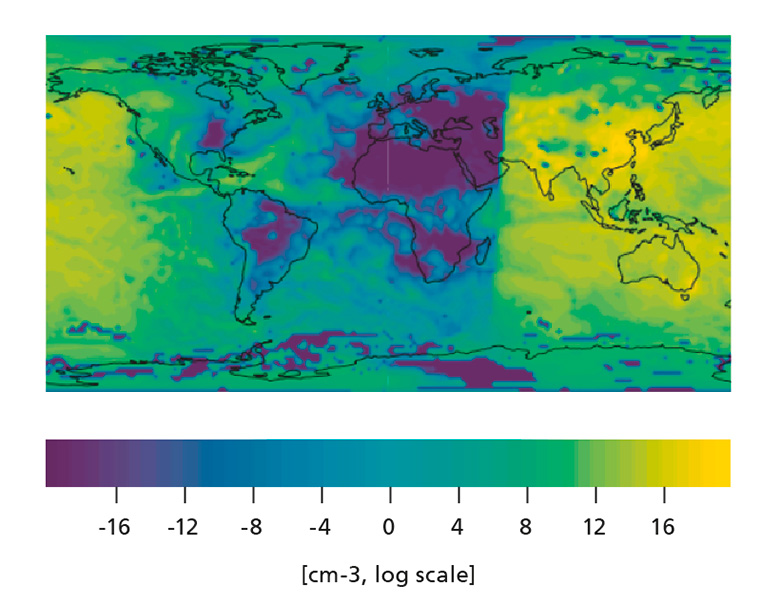Solid particles in our atmosphere play an important role in our climate system and consequently also for climate change. Their inclusion in microphysical climate models is a central challenge in the creation of global long-term forecasts. How Machine Learning can help here is being investigated in a paper from our division »High Performance Computing«.
Microparticles With a Big Impact: Aerosols in Climate Models
Project on Machine Learning in Climate Research
The physical forces resulting from the motion and transformation of aerosol masses in the atmosphere are the greatest sources of biggest sources of uncertainty in measuring man-made climate effects. Aerosols are produced, for example, by the burning of fossil fuels or volcanic eruptions. Depending on their type, they scatter or absorb atmospheric radiation, depending on their type, and thus cause either cooling or warming effects. So-called »condensation nuclei« also cause an extension of the lifetime of clouds by reflecting sunlight.
The Problem Lies in the Aerosol Detail
The computational representation of aerosol effects in climate models represents a major challenge for research. These are very marginal, microphysical changes and trends that are extremely time-consuming and costly to calculate. As a result, many models consider aerosols only as constant, external parameters and record them only once in the data collection process. In addition, they often do not distinguish between different aerosol types and simply assume that the particle mass is heterogeneous but one-dimensional with respect to the climate effect.
One of the models, which can model different aerosols is the Aerosol Microphysics Model developed by the Max Planck Institute for Meteorology in Hamburg. This distinguishes between different aerosol types such as sea salt, sulfates and black carbon. It also captures various physical processes such as nucleation (formation of condensation nuclei), condensation and water absorption.
Machine Learning as the Key to Optimization
Our PhD student Paula Harder focuses on the topics »Deep Learning« and »Climate Modeling« in cooperation with the University of Oxford. In her research work, she is developing, among other things, an emulator based on Artificial Intelligence that approximates the microphysics of the aerosol model and makes the calculations faster and more efficient. In computer technology, an emulator is a system that imitates another system in certain aspects. The goal is to enable climate predictions on a global scale, with very high precision and over long periods of time through Machine Learning. This represents an opportunity to, if not prevent, at least recognise and prepare for the consequences of climate change.
To accomplish this, eleven million input-output data pairs were first generated using the aerosol model. This data was then used to train a neural network to replace the costly origin model. Subsequently, additional computational constraints were incorporated to overcome physical constraints – such as conservation of mass and positivity – were taken into account.
A Promising Perspective
The results are extremely satisfactory: The replication of the aerosol model by the Neural Network works very well in the offline experiments so far – in fact, a high precision is achieved. Finally, on a GPU, the computation time was recently accelerated to 64 times the value of the original model.
By this procedure the emulator can be embedded again into an online global climate model, this is the next step. A central problem of today's climate research – i.e., the fast, cost-effective capture and calculation of aerosol masses – is thus expected to be overcome in the near future.
Project Partner
Paula Harder works together with the research group »Climate Processes« led by Prof. Dr. Philip Stier, Professor of Atmospheric Physics and Head of the Department »Atmospheric, Oceanic and Planetary Physics AOPP« at the University of Oxford.
Project Duration
The project runs as a PhD project over three years (2020 to 2023).

